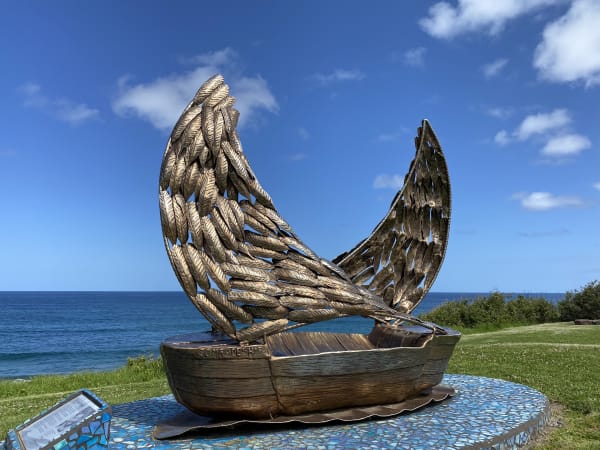Public art is tricky. It’s almost impossible to please everyone. What the art critic considers cutting-edge, the public will see as an eyesore. Too abstract and the public can feel alienated, too literal or didactic and the work can be forgotten in a glance.
So how does a community commemorate a treasured citizen or significant event these days? In the past, we would erect statues in town squares. Over time many of these haughty monuments to forgotten dignitaries have become so emptied of meaning, they’re virtually invisible. Time will do that. Time is also fast catching up with bronze confederate generals, dictators, colonists and slave traders.
Of course, there are countless public art works that are celebrated by critics and communities alike: Antony Gormley’s Angel of the North at Gateshead, Louis Bourgeois’s Spider at the Tate Modern, Anish Kapoor’s Cloud Gate in Chicago. But most of these works required such massive budgets that their scale often hints at state-sanctioned hubris; look at us, look at what we can afford. Not many cities around the world manage to get it right. And small communities rarely do.
Across the road from Coledale hospital, on a grassy patch above the sea not far from a busy coastal walk, is Comradeship.
In 2007, local sculptor, Didier Balez was approached by Dave Beswick and Cathy Bloch. A few years before, their long-time friend, Mike Dwyer had died at 52 after a long illness. Teacher, activist and union leader, Mike was widely loved in the community. He campaigned tirelessly for social justice and led a picket to save the hospital when it was threatened with closure.
Wollongong City Council had agreed to dedicate the little park to Mike. Dave and Cathy asked Didier whether he would construct a commemorative wooden sign.
Mike Dwyer loved to sail and Didier discovered that while he was dying, Mike, Dave and their friend Peter Wilson constructed a wooden boat together. Didier had the idea to turn this story of great friendship into a sculpture.
Comradeship is a whimsical, almost childlike work. Fashioned from recycled stainless steel, it’s about the height of an adult. Approaching from the west with the ocean beyond, a silver dingy with two full sails appears to be making its way at a rakish angle across the water. The craft is being propelled impossibly by two winds, the sails are billowing in opposite directions. Didier said that he was inspired by stories of Mike, “He was everywhere at once.”
As you get nearer, you observe that the sails are constructed of countless steel feathers, each hand made. Didier was thinking of the quill, the symbol of a scholar. But they could also be the wings of a dove or an angel. The ambiguities are important, the work contains just enough that’s recognisable for anyone to feel some connection and enough that’s abstract to become intrigued. To want to learn more. Which is when you read the story on the plaque.
I live nearby and often walk that coastal path. Over the years I have seen countless visitors to the area standing by the little boat wiping away a tear. Whatever it is, Comradeship is a small miracle of a work. It connects us to a heartfelt a story deeply imbedded in this place. The loss is still raw, the love of this man tangible.
This modest public artwork is nearly 15 years old now, but its power sails on, undiminished by time.







